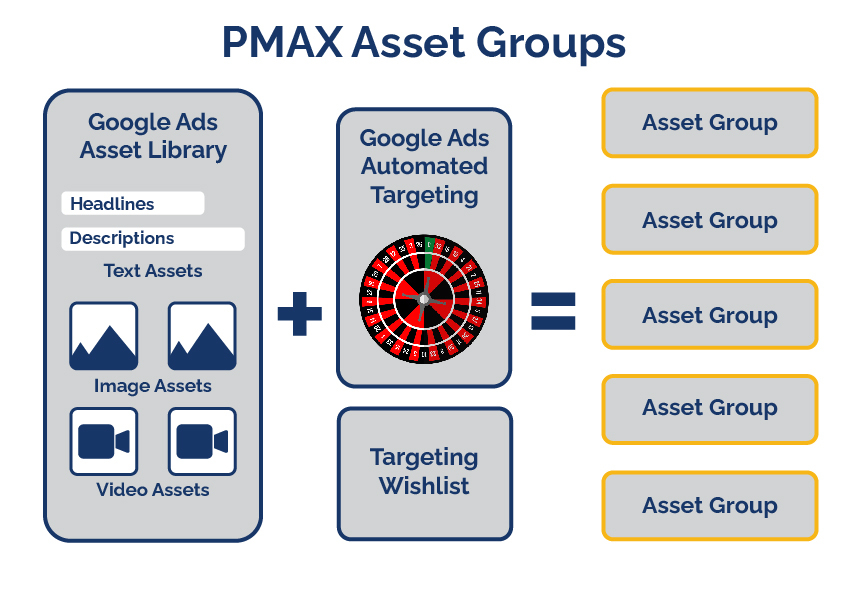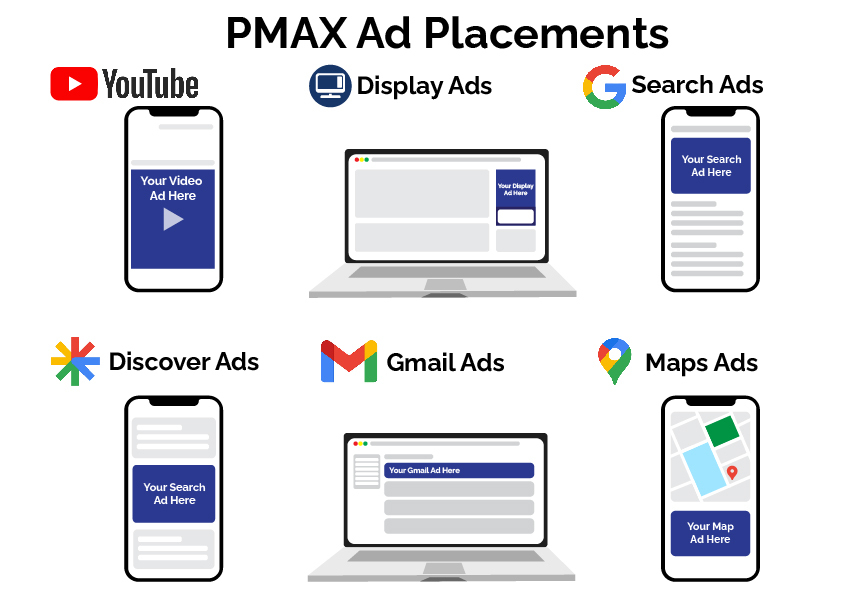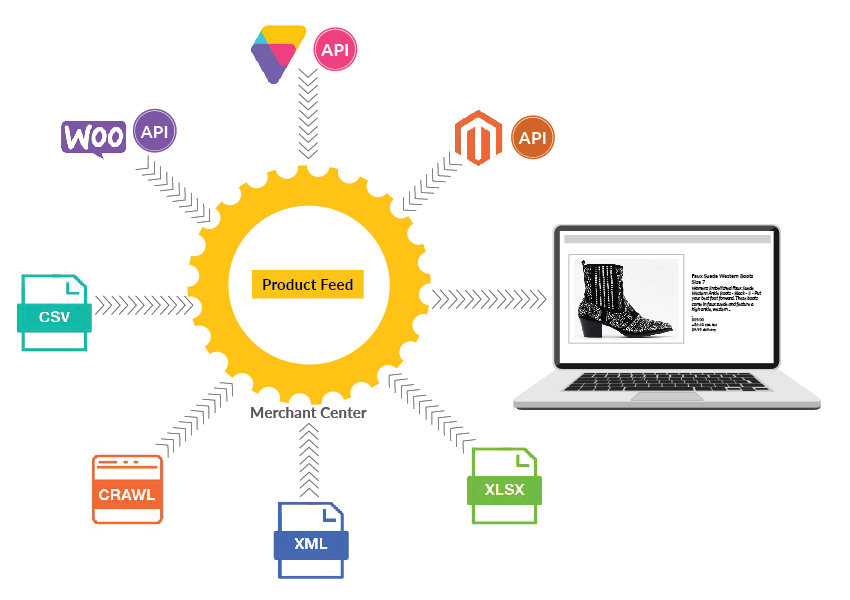PMAX Campaign Development
PMax campaigns were introduced by Google a couple of years ago, and have been changing almost on a monthly basis. Microsoft introduced their own compatible PMax campaigns recently, as a derivative of “Smart Shopping”. To date, PMax is most likely to add value in eCommerce applications, when driven by a product feed.
Once a PMax campaign is launched, we watch its performance closely. We monitor serving momentum, PPC metrics, and audiences to optimize the campaign. This optimization leads to the transition of the campaign from manual bidding to automated bidding. From then, we continue to manage the campaign from disapprovals to other critical issues that may arise.







